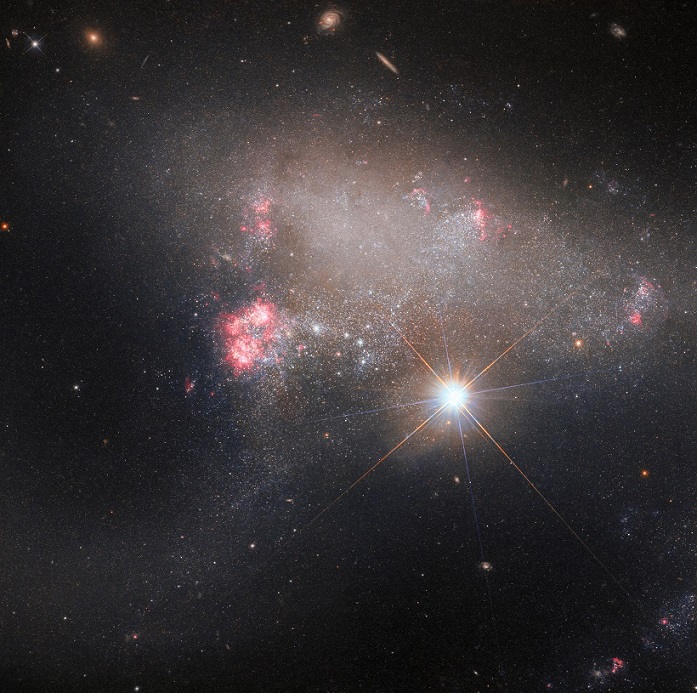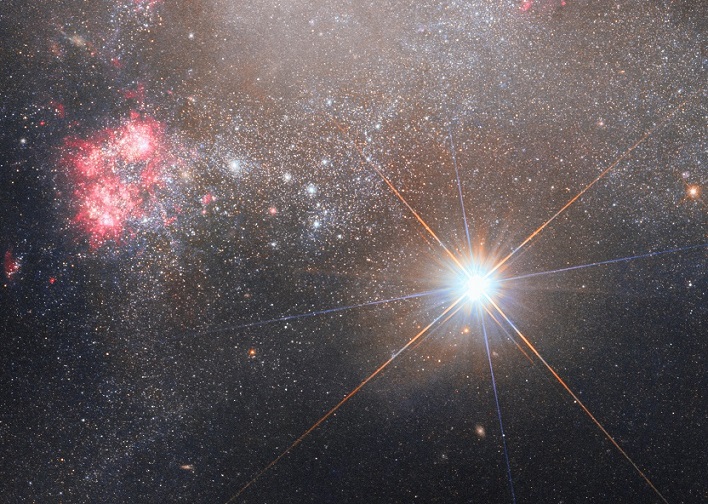The irregular galaxy Arp 263 lurks in the background of this image from the NASA/ESA Hubble Space Telescope, but the view is dominated by a stellar p
The irregular galaxy Arp 263 lurks in the background of this image from the NASA/ESA Hubble Space Telescope, but the view is dominated by a stellar photobomber, the bright star BD+17 2217.
Arp 263 –also known as NGC 3239– is a patchy, irregular galaxy studded with regions of recent star formation, and astronomers believe that its ragged appearance is due to its having formed from the merger of two galaxies. It lies around 25 million light-years away in the constellation Leo.

Two different Hubble investigations into Arp 263, using two of Hubble’s instruments, contributed data to this image. The first investigation was part of an effort to observe the sites of recent supernovae, such as the supernova SN 2012A that was detected just over a decade ago in Arp 263.

Astronomers used Hubble’s powerful Wide Field Camera 3 to search for lingering remnants of the colossal stellar explosion. The second investigation is part of a campaign using Hubble’s Advanced Camera for Surveys to image all the previously unobserved peculiar galaxies in the Arp catalog, including Arp 263, in order to find promising subjects for further study using the NASA/ESA/CSA James Webb Space Telescope.
The interloping foreground star, BD+17 2217, is adorned with two sets of crisscrossing diffraction spikes. The interaction of light with Hubble’s internal structure means that concentrated bright objects, such as stars, are surrounded by four prominent spikes.

Since this image of BD+17 2217 was created using two sets of Hubble data, the spikes from both images surround this stellar photobomber. The spikes are at different angles because Hubble was at different orientations when it collected the two datasets.
All credit: ESA/Hubble & NASA, J. Dalcanton, A. Filippenko


